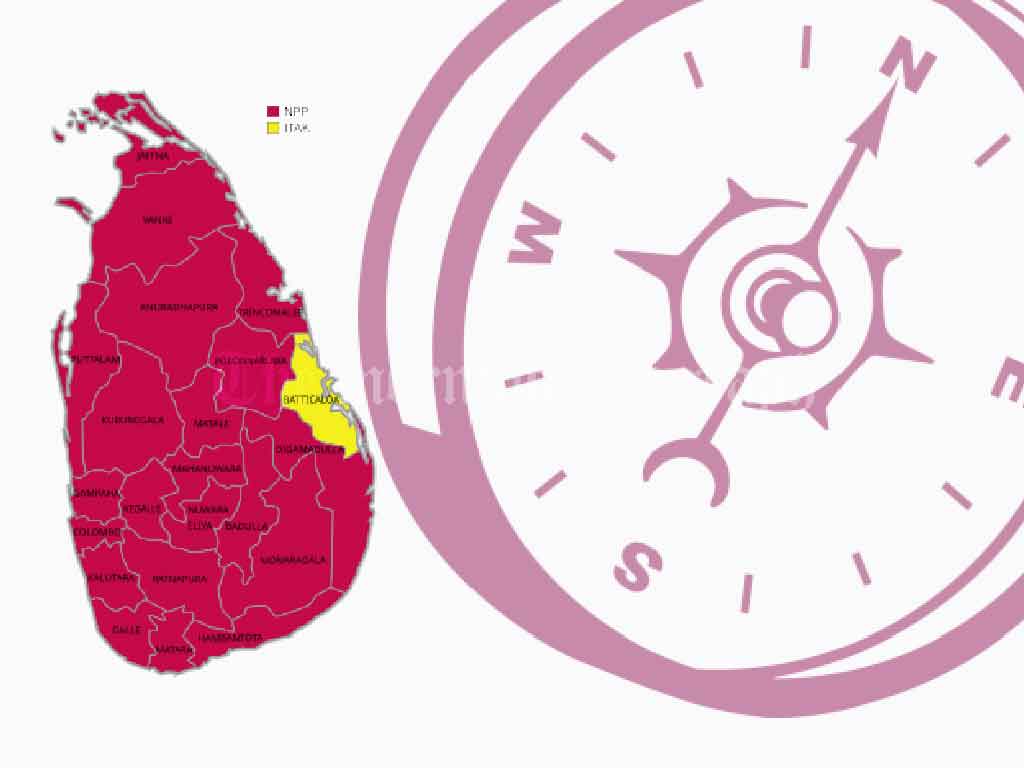
In the 2024 parliamentary election, the National People’s Power (NPP) made significant strides in the traditionally Tamil-majority areas of Sri Lanka, securing 25% of the Tamil votes in Jaffna, a region historically dominated by Tamil political parties. This success marks a notable shift in the political landscape of the North and East, as the NPP managed to break into areas previously considered strongholds for Tamil-centric parties.
In the Wanni district, the NPP secured a win in Vavuniya, but the region saw a fragmented result with Samagi Jana Balawega – All Ceylon People’s Congress Coalition winning Mannar and the Ilankei Tamil Arasu Katchi (ITAK) taking Mullaitivu. Despite this, the district ultimately saw the NPP gain control, though it managed to secure only 20% of the vote—its smallest victory in the region. This was a marked contrast to the 2020 general elections, where ITAK easily won the three constituencies.
The election results in Wanni were a significant blow to ITAK, which narrowly lost one seat to the NPP, a new development considering ITAK had previously been the dominant force in the area. Thureirasa Ravikaran, a newcomer who joined ITAK from Mullaitivu, retained his seat. However, in the context of the overall district, the NPP’s rise signals a shift in voter alignment, particularly in the Tamil-majority constituencies that were once firmly under ITAK control.
In Batticaloa, the only district in the North-East that did not fall under the NPP’s influence, ITAK managed to maintain its presence. Despite this, the NPP secured one seat in Batticaloa Municipal Constituency and gained additional ground in Trincomalee and Digamadulla districts, where it also emerged victorious.
In Digamadulla, the NPP had a strong performance, securing 40% of the vote share and four seats. The NPP’s presence in this district marked a significant shift, as Samagi Jana Balawega (SJB) and Sri Lanka Muslim Congress (SLMC) lost ground, particularly in Samanthure and Kalmunai, where the NPP took control. However, Pothuvil remained narrowly under the control of SJB. This shift in Digamadulla is notable, as it signals growing support for the NPP among voters in the Eastern province.
As a result of these developments, the National People’s Force managed to secure 12 seats in the North-East region, while other parties, including Tamil and Muslim parties, secured 16 seats. However, it is important to note that the NPP did not manage to capture more than 50% of the votes in any constituency in the North-East, indicating that while it made significant inroads, it has yet to completely dominate these areas.
Overall, the North-East saw a major political shift in favor of the National People’s Force, with the NPP’s victories in Jaffna, Vanni, and Digamadulla signaling a broader change in the traditional political alignment of Tamil and Muslim voters. Despite not securing an outright majority, the NPP’s success in cutting into the vote base of Tamil parties, particularly in Jaffna and Vanni, is a remarkable achievement in a region historically resistant to Southern-led political movements.
This realignment indicates a potential reshaping of political allegiances in Sri Lanka’s North and East, with the National People’s Force emerging as a significant political player in the region.




